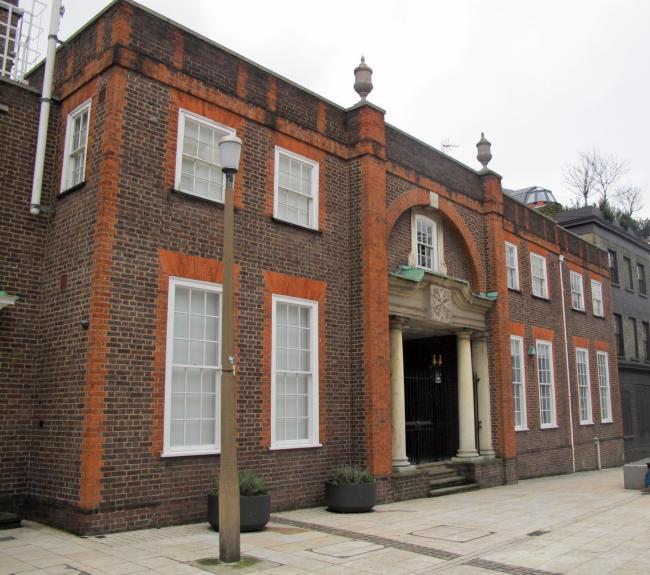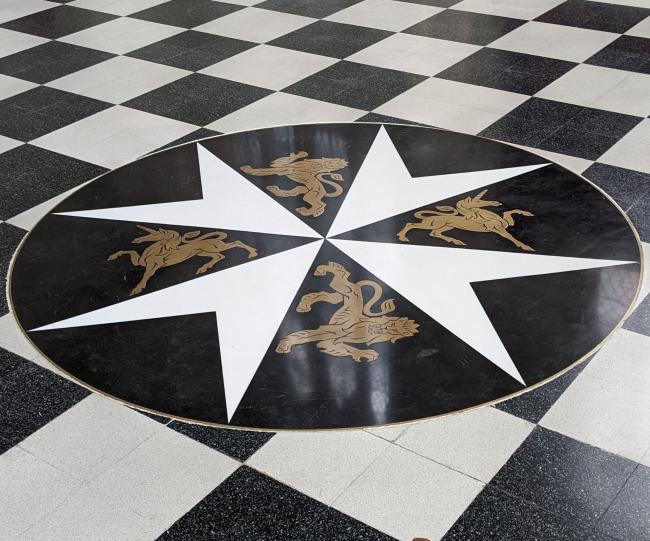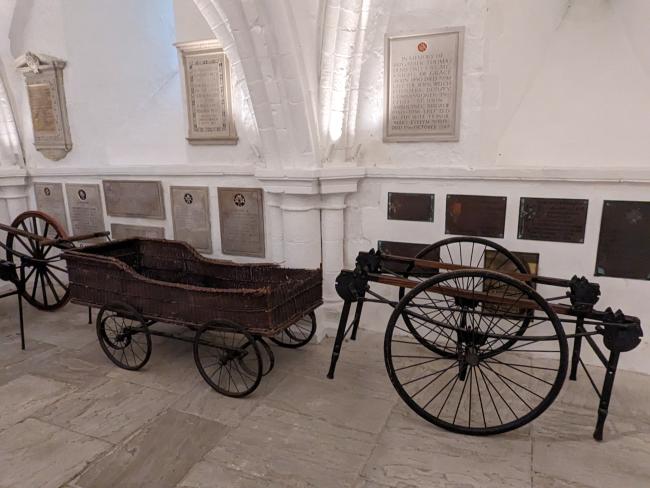St John Ambulance is an iconic institution, known for providing first aid at public events like village fairs and sports competitions. But behind the service of these committed volunteers is a history that spans a millennium, and a London church at the heart of it.
The Order of St John is a royal order of chivalry that is dedicated to serving humanity and has a long history of caring for the sick. Today, through St John Priory Church in Clerkenwell, London, and the museum across the road, the Order hopes to tell people about its amazing history. Parts of St John’s Priory Church are survivals from as early as the 12th Century. And this legacy has helped the Order to stick to its original values to this day.
In its modern form, the Order of St John was created in 1888 and soon set up St John Ambulance, which it still runs today. But the origins of this organisation go back much further, and serving public health has been at the core of its mission since the very beginning.
“This isn’t a museum of artifacts, as wonderful as many of the artefacts are. There’s a rich history of the paintings and some of the objects. They’re wonderful things. But that’s not the real story,” shares James Radford, Chief of Staff for the Order of St John.
“The story is the story of healthcare in different guises through the ages, often pioneering ...At times in history we've been at the forefront of innovation in this kind of emergency care – first-aid type setting.”

Where did it all begin?
The Order of St John dates all the way back to 11th century Jerusalem, when a hospital was established to care for pilgrims that had fallen ill on their way to the Holy Land. The monks who set up the hospital dedicated it to St John the Baptist. And they were soon recognised by the Church as a military religious order.
The Knights Hospitallers – as they were known – committed to looking after anyone, regardless of race or wealth. The original Order of St John, and what it stood for, grew quickly through Europe. The eight-pointed cross, which you may recognise as the St John Ambulance logo today, was adopted as the symbol of the Order. And by the 1140s, Clerkenwell Priory had been established in London as the English base for the Knights Hospitallers.

A big role to play
The legacy and heritage of the Knights Hospitallers and the Clerkenwell Priory continue through important work in public first aid, and the Order of St John remains at the forefront of innovation in healthcare.
“We saw that most recently during the pandemic where we played a really important role as part of the vaccination program. Obviously mass vaccination programs are tough to do. But we trained 27,500 people from within communities to give the injections themselves,” says James.
“...And we were at the forefront of some of the work around the public defibrillation, around community first responders, and around, you know, cycle response units.”
Cycle response units are first aiders or paramedics who respond to emergency situations on bicycles. They are effective in built-up areas that are hard for other vehicles to access, and save ambulance crews vital time.
All these centuries later, the values of the Knights Hospitallers live on through the work of St John Ambulance.
Symbol of service
Over the years, the buildings at Clerkenwell Priory changed, as the fortunes of the Order of St John wavered. When King Henry VIII split England from the Catholic Church, the Order of St John was dissolved in England entirely, not to be re-formed until 1888. The modern Order eventually re-occupied the site, and then rebuilt it after it was bombed in the Second World War.
But despite all the upheaval, the church's 12th century crypt survived. And, along with the 1950s church above, this crypt pays homage to the long history of the Order of St John and its role in shaping modern healthcare. Eight-pointed crosses decorate all sorts of furnishings, while there are also wheeled stretchers that dates back to the Boer War, when St John’s Ambulance Brigade volunteers provided care for wounded soldiers.

At the church you will find a strong sense of the history and values of the order.
“[Visitors are] surprised to learn that the eight-pointed cross on all of our uniforms isn't just by happenstance," shares James.
"The true heritage is of the values that stretch back through time. Values of compassion, of service, you know, of caring for the sick, of the poor in moments of need, which charts all the way back to Knights of the Order who knelt in the dirt to treat pilgrims in the 11th century in Jerusalem.”
There is so much for visitors to explore at this site, from Victorian ambulance equipment to medieval coins. The depth of history is astounding and has inspired a movement of healthcare volunteering across the globe.
Enduring values
St John’s Priory Church is a brilliant piece of the Order of St John's heritage. The unassuming outside can easily be missed. But behind the scenes, the building is supported by powerful values, and a history dating back to the 11th century. Since those first monks created a hospital to treat pilgrims, the Order has transformed in many ways. It has moved its headquarters and been re-established in different forms. But today we still benefit from the work that the Order is dedicated to.
For over a millennium, the Order of St John has provided public healthcare to all who need it. It has been at the forefront of medical innovations and responding to pandemics. And the Order’s values and work have spread across borders to inspire hundreds of thousands of people.
This brilliant, but little-known London church and the nearby museum encompass the legacy and heritage of this innovative organisation. Visit for yourself to learn more about the Order’s work and how its values have endured over the centuries.

